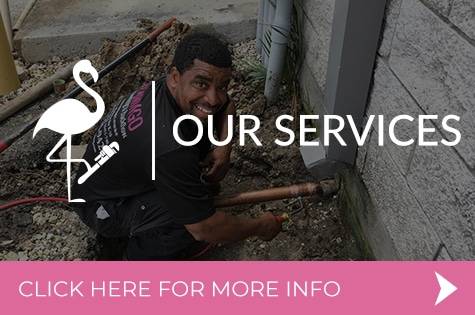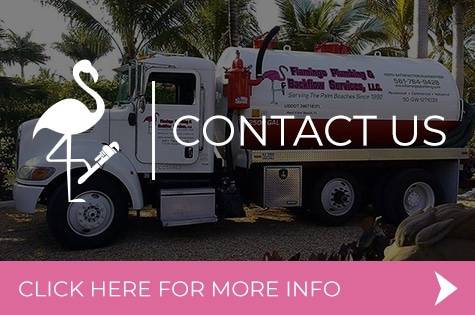Plumbing systems play a crucial role in maintaining water quality, yet they can sometimes introduce unexpected contaminants or change water properties in ways that affect safety and taste. From the materials used in pipes to the pressure levels within the system, each component can impact water composition, potentially turning a safe water supply into a source of concern. Understanding how plumbing factors influence water quality is essential for ensuring the health and safety of any building’s occupants.
1. Corrosion and Water Contaminants
Corroded pipes can introduce harmful substances like lead, copper, or iron into your water supply. This usually happens when the interior of the pipe deteriorates over time, especially in older plumbing systems. Lead, in particular, is a major health hazard, even in small amounts. According to the CDC, no level of lead exposure is considered safe. Corroded pipes can also turn water rusty, leading to an unpleasant taste and discoloration. This is more than just a cosmetic issue—rusty water can contain sediment that clogs filters and affects water quality.
How can I tell if corrosion is affecting my water quality?
Look for signs like discolored or metallic-tasting water, a drop in water pressure, or visible rust on exposed pipes. These indicators suggest that your plumbing system may be contributing contaminants to your water.
2. Leaks and Cross-Contamination
Leaks in your plumbing system do more than just waste water. They can also allow contaminants from the surrounding soil or ground to infiltrate the pipes. For example, soil pollutants, pesticides, or even bacteria can enter through small cracks or holes in underground pipes. This contamination poses serious health risks, especially if it goes undetected. Regular leak detection is crucial to prevent this kind of cross-contamination.
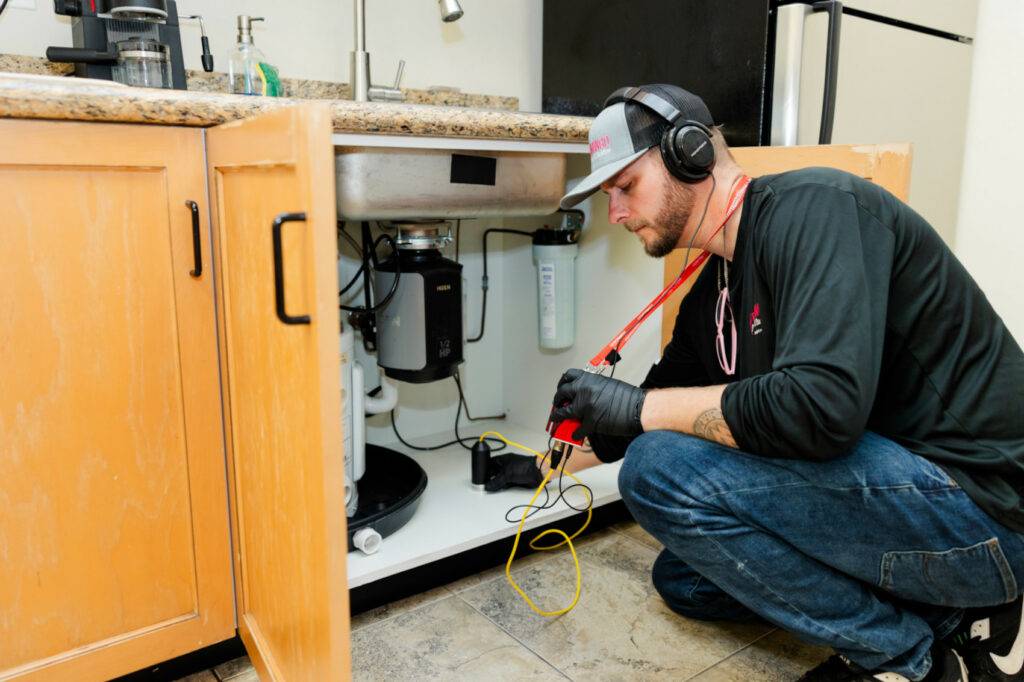
We offer advanced leak detection services to identify hidden leaks before they become a health hazard. Using cutting-edge technology, our team ensures that your water supply remains clean and uncontaminated.
3. Pipe Materials Matter
Some pipe materials are safer than others. Older homes often have pipes made of galvanized steel or lead, both of which can leach harmful substances into drinking water. Even newer materials like copper can react with water that’s too acidic, resulting in a metallic taste. Here’s a quick rundown:
- Lead Pipes: Highly toxic, banned in new installations, but still present in older homes.
- Galvanized Steel: Prone to corrosion, which can lead to lead leaching if connected to lead pipes.
- Copper: Can contribute to high copper levels in water, especially if water is acidic.
- PEX and PVC: Safer alternatives, resistant to corrosion and leaching.
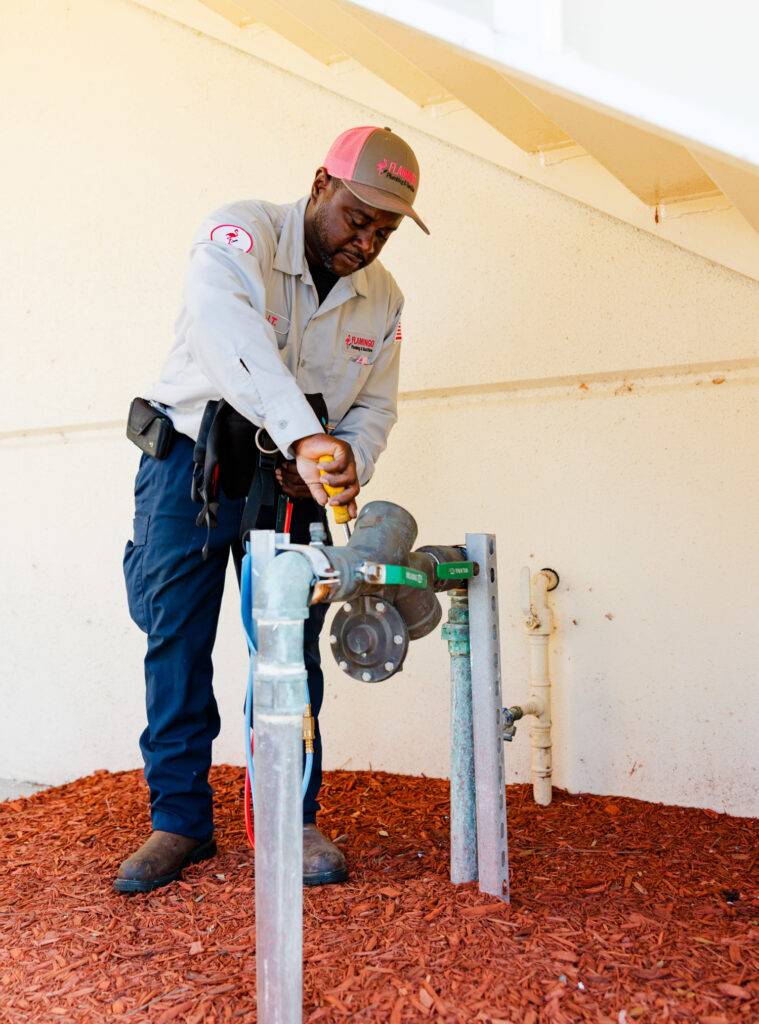 4. Backflow Prevention
4. Backflow Prevention
When water pressure drops suddenly—like during a burst pipe or hydrant use—it can cause contaminated water to flow back into the clean water supply. This backflow can introduce anything from fertilizers to bacteria into your drinking water. Backflow prevention devices, such as check valves and vacuum breakers, are essential safeguards that keep contaminated water from re-entering the plumbing system.
5. Water Pressure Issues and Contaminant Infiltration
Low water pressure isn’t just a nuisance. It can also allow contaminants to infiltrate your plumbing system. When pressure drops below a certain point, it can create a vacuum effect, sucking in nearby contaminants like soil or groundwater. Maintaining stable water pressure is key to preventing these types of issues.
6. Sediment Buildup in Plumbing Systems
Over time, sediment can accumulate in pipes and fixtures, especially in areas with hard water. This buildup can harbor bacteria and other microorganisms, which can then be released into your water supply. Flushing your water heater and pipes regularly helps keep sediment levels in check and reduces the risk of bacterial contamination.
7. Cross-Connections and Health Risks
Cross-connections occur when a potable water line intersects with a non-potable source, such as an irrigation system or a chemical sprayer. If not properly managed, these connections can allow chemicals or bacteria to enter your water supply. To reduce the risk of cross-contamination:
- Install backflow preventers at critical points.
- Regularly inspect and maintain all cross-connection devices.
- Conduct annual water quality testing to detect any signs of contamination early.
8. Impact of Temperature on Water Quality
Temperature fluctuations can impact the quality of your water. Hot water, for instance, can accelerate the leaching of metals from pipes and fixtures, leading to higher levels of contaminants. On the other hand, colder water can make it more difficult to dissolve certain substances, causing sediment to settle in pipes. To stabilize temperature-related issues:
- Install tankless water heaters with built-in temperature controls.
- Use insulated pipes to minimize temperature variations.
- Regularly monitor water quality, especially in homes with older plumbing systems.
9. Biofilm and Bacterial Growth
Certain plumbing materials and conditions can promote the growth of biofilm—a slimy layer of bacteria that adheres to the inside of pipes. Biofilm not only affects water taste and smell but can also lead to health problems if pathogenic bacteria like Legionella grow in the system. Regular disinfection and choosing materials less prone to biofilm growth, such as copper, can help mitigate this issue.
10. Plumbing Fixture Choice
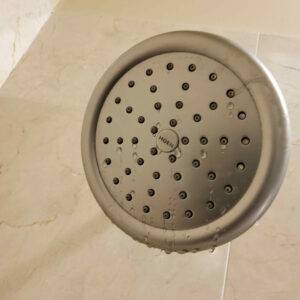 Plumbing fixtures themselves can contribute to water contamination. Older faucets and showerheads can harbor bacteria or leach metals into the water. Replacing old fixtures with new ones that meet NSF/ANSI standards for water safety can make a big difference. Look for fixtures labeled as “lead-free” and made of materials like stainless steel or modern plastics.
Plumbing fixtures themselves can contribute to water contamination. Older faucets and showerheads can harbor bacteria or leach metals into the water. Replacing old fixtures with new ones that meet NSF/ANSI standards for water safety can make a big difference. Look for fixtures labeled as “lead-free” and made of materials like stainless steel or modern plastics.
Also read: 5 Reasons Why Your Shower Is Making Squealing Noise
11. The Role of Water Softeners and Filtration Systems
While water softeners can improve water quality by reducing hardness, they can also introduce sodium or potassium into the water supply. This isn’t necessarily harmful for most people, but those on low-sodium diets should take note. Filtration systems, on the other hand, can be highly effective at removing contaminants, but they need to be properly maintained. A poorly maintained filter can become a breeding ground for bacteria, reducing water quality instead of improving it.
How Flamingo Plumbing Can Help: Flamingo Plumbing provides water filtration system installation and maintenance services. Our team ensures your filtration systems are working at peak performance, so your water stays clean and safe year-round.
12. Addressing Plumbing-Related Water Quality Issues
Regular inspections and maintenance are crucial for maintaining high water quality. This includes checking for leaks, flushing water heaters, and testing for contaminants like lead and bacteria. Consider installing point-of-entry (POE) or point-of-use (POU) filtration systems for an added layer of protection. Additionally, upgrading old pipes and fixtures can eliminate sources of contamination and ensure a safer water supply.
Protect Your Water Quality with Flamingo Plumbing
Ensuring safe and high-quality water starts with a well-maintained plumbing system. At Flamingo Plumbing, we specialize in advanced leak detection, backflow prevention, and water filtration system installations that keep your water supply clean and contaminant-free. Whether it’s addressing corrosion, sediment buildup, or cross-contamination, our team has the expertise to tackle all plumbing-related water quality issues. Contact us today to schedule an inspection or learn more about how we can help you maintain a healthy and safe water supply in your home or business.




